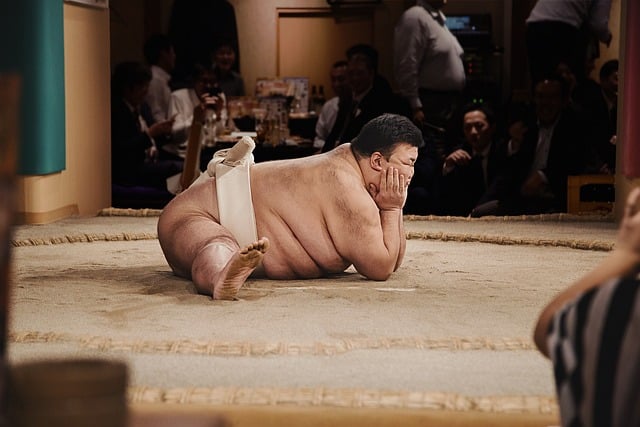Non-surgical fat reduction treatments, such as CoolSculpting, have gained popularity due to their safety, less invasiveness, and varied effectiveness compared to procedures like liposuction. CoolSculpting stands out for its use of controlled cooling technology to target and eliminate specific fat cells without incisions or injections, offering minimal downtime, no recovery period, and sustained results over time. When choosing among non-surgical options, factors including safety, recovery time, cost, and desired outcomes should be considered; CoolSculpting presents a compelling alternative to invasive treatments like liposuction due to its gentle approach, long-lasting results, and minimal side effects.
Considering non-surgical fat reduction options? This comprehensive guide offers a detailed CoolSculpting vs invasive treatments comparison. Discover the benefits of CoolSculpting, a non-invasive approach using cryolipolysis, versus surgical alternatives. We explore safety, recovery times, costs, long-term results, and potential side effects, empowering you to make an informed decision about your body contouring journey. Dive into this analysis for a clear understanding of the best fat reduction method for your needs.
Understanding Non-Surgical Fat Reduction: An Overview

Non-surgical fat reduction treatments have gained significant popularity as an alternative to invasive procedures like liposuction. These non-invasive methods use various technologies, such as cooling (as in CoolSculpting) or high-energy electromagnetic waves, to target and eliminate fat cells without surgery. The key advantage lies in their minimal downtime and reduced risk compared to traditional surgical options.
When comparing non-surgical fat reduction to invasive treatments, it’s essential to consider factors like effectiveness, comfort during the procedure, recovery time, and potential side effects. A Non-Surgical Fat Reduction Comparison reveals that while some methods may offer quicker results, others provide more gradual yet sustained outcomes. The choice between them often depends on individual preferences, specific body areas to be treated, and the desired level of convenience.
CoolSculpting: The Non-Invasive Approach to Fat Loss

CoolSculpting represents a groundbreaking non-surgical fat reduction approach, offering a safe and effective alternative to invasive treatments. Unlike traditional methods that often involve incisions or injections, CoolSculpting utilizes advanced technology to target and freeze specific fat cells. This procedure is designed to be comfortable for patients, with minimal downtime and no recovery period.
During the treatment, a specialist applies a cooling device to the problem areas, causing fat cells to crystallize and eventually die. The body then naturally processes and eliminates these cells, leading to visible fat reduction over time. CoolSculpting is particularly appealing due to its versatility, treating various areas including the abdomen, love handles, and even the underarm region, providing a comprehensive solution for those seeking non-surgical fat loss in comparison to other available options.
How Does CoolSculpting Work? A Scientific Glimpse

CoolSculpting, a groundbreaking non-surgical fat reduction procedure, works by using controlled cooling to target and eliminate specific fat cells. During the treatment, a device applies precise cold to areas like the abdomen, love handles, and thighs, causing fat cell membranes to break down and crystallize. This process freezes and destroys these cells, leading to their elimination from the body through natural metabolic processes over the following weeks.
At a cellular level, the cooling effect disrupts the fat cell’s energy production and structure, making them unable to function properly. Unlike traditional invasive treatments that may cause significant downtime and side effects, CoolSculpting offers a safe and effective alternative. Its non-invasive nature makes it an attractive option for individuals seeking fat reduction without surgery, offering both convenience and minimal recovery time in a professional clinical setting.
Invasive Fat Reduction Treatments: A Look at Surgical Options

Invasive fat reduction treatments, while offering more aggressive results, come with a series of risks and recovery times. These procedures, including surgical options like liposuction, involve incisions and often general anesthesia. Liposuction, for instance, sues a suction device to physically remove fat cells from targeted areas. While effective, it requires a hospital stay, extensive downtime, and carries potential complications such as infection, bleeding, and scarring.
Comparatively, non-surgical fat reduction methods like CoolSculpting offer a safer alternative with minimal side effects. By using cryolipolysis, CoolSculpting freezes fat cells without disturbing surrounding tissue. This process is non-invasive, painless, and allows patients to resume their normal activities immediately. As such, it provides an attractive option for those seeking fat reduction without the risks associated with more invasive treatments.
Comparing Safety and Recovery Times: CoolSculpting vs Invasive Procedures

When comparing CoolSculpting to invasive fat reduction treatments, one of the key factors that stand out is safety and recovery time. CoolSculpting, a non-surgical fat reduction procedure, involves using controlled cooling to freeze and destroy fat cells. This method is generally considered safe with minimal side effects, such as temporary numbness or discomfort in the treated area. Recovery is swift; patients can resume their normal activities almost immediately without significant downtime.
In contrast, invasive treatments like liposuction involve surgical incisions and general anesthesia. While effective in removing targeted fat, these procedures carry more risks, including infection, bleeding, and potential damage to surrounding tissues. Patients typically require a longer recovery period, often facing several weeks of swelling, bruising, and limited physical activity to allow for proper healing.
Cost Analysis: Which Option Offers Better Value?

When considering non-surgical fat reduction options, cost is a significant factor in determining which treatment offers better value. CoolSculpting presents itself as an attractive alternative to invasive procedures like liposuction due to its minimal downtime and non-traumatic nature. The procedure involves targeted cold therapy to break down adipose tissue over several weeks, making it a relatively affordable option within the cosmetic industry.
In contrast, while invasive treatments like liposuction can deliver rapid and drastic results, they often carry higher costs, longer recovery times, and associated risks. Liposuction requires general anesthesia, incisions, and suction devices, all of which contribute to a more extensive procedure and elevated expenses. Therefore, in the context of a cost analysis between CoolSculpting and invasive treatments, CoolSculpting emerges as a compelling option for those seeking effective fat reduction without the complexities and financial burden of surgery.
Long-Term Results and Potential Side Effects

When comparing CoolSculpting to invasive treatments for non-surgical fat reduction, understanding long-term results and potential side effects is crucial. CoolSculpting, a popular non-surgical procedure, offers long-lasting results with minimal downtime. Studies show that patients often experience a 30-50% reduction in targeted fat cells, which can lead to a noticeable slimming effect for up to 4 years. However, it’s important to note that individual results may vary.
In contrast, invasive treatments like lipoaspiration (liposuction) provide more immediate and dramatic results but come with higher risks. These procedures involve making incisions and suctioning fat cells, which can result in post-operative swelling, bruising, and potential complications. Long-term effects of liposuction may include fluid retention, tissue contraction, and the need for touch-up treatments. A non-surgical comparison like CoolSculpting thus presents a more gentle and low-risk alternative for those seeking fat reduction.
